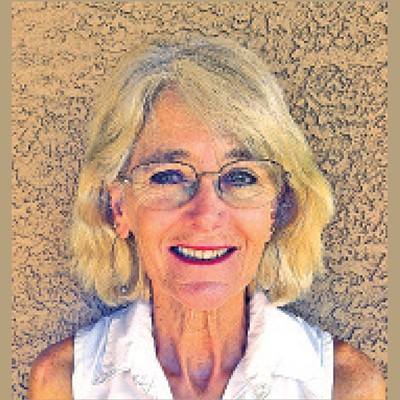You've no doubt heard of rescued birds from oil spills, or even rescued beached whales—but have you ever heard of lassoing a cactus to save it from being plowed under for a shopping center or a new school?
If you're Chris Monrad, the cactus rescue program chairman of the Tucson Cactus and Succulent Society, you know about a crew of more than 200 society members who participate in missions to save cacti and other native plants that would otherwise be destroyed during the development of Arizona.
"We often get calls from the Pima County Department of Transportation, for road-widening projects," Monrad said, "but we actively pursue architects, engineers, school districts and developers. ... People may hear of us from media stories or TCSS members' word of mouth. We do not remove plants from private residences, however."
Tanya M. Quist, director of the University of Arizona Campus Arboretum, said saving native plants helps promote sustainability in urban desert settings.
"By rescuing and relocating mature and maturing specimens, we preserve the biodiversity they represent, encourage the restoration of ecosystem service lost during urban development, and enjoy the immediate aesthetic benefits these larger specimens provide for our landscapes."
Monrad said club members often bring in trailers or pickup trucks to assist with transporting the plants to the TCSS nursery area for planting until the society's next plant sale.
"Since 1999, we have accomplished approximately 300 rescues, and approximately 58,000 native plants have been saved and provided with new homes throughout Arizona," Monrad said.
"Our volunteer labor makes these efforts viable," he continued. "It is cost-prohibitive for developers to manage the volume of material that we can collect on any given site. Our developer partners already invest significant funds to comply with the NPPO (Native Plant Preservation Ordinance), and the TCSS rescue crew is able to provide one more layer of assistance in helping to give more plants a new lease on life."
The UA is one local organization that uses plants rescued by the TCSS.
"The Sixth Street Residence Halls project, Arbol de la Vida and Likins Hall at the University of Arizona's campus included placement of a special cacti species that was a result of TCSS rescue-crew propagation efforts, the TCSS golden fish-hook barrel," said Debra Johnson, senior architect for planning design and construction at the UA.
Karen M. Cesare, president of Novak Environmental Inc., said her company works with the TCSS every chance it gets.
"We recommend them all the time and encourage our clients, many of whom are land-developers, to make sure they have the opportunity to rescue plants wherever possible. They are probably the most-ethical, easy-to-work-with group I know."
The plants are sold to the public at various times throughout the year, Monrad said. "These sales recover the cost of Arizona Department of Agriculture permits and tags, and raise funds to further our educational efforts."
Monrad said that through the TCSS alliance with the Arizona-Sonora Desert Museum, the group is sometimes able to assist with issues associated with specially protected and endangered species of cacti and succulents.
Some examples of cacti sale prices: Barrels are about $1.50 per inch diameter/height (greater of the two); hedgehogs, about $1 to $2 per stem; and ocotillo, about $4 per foot (to tallest cane). Saguaros are priced on a sliding scale ranging from $7 for a 5-inch-tall plant to $100 for one that is 4 feet tall.
TCSS' next exhibit and sale of rescued plants is from 8 a.m. to 6 p.m., Saturday, April 28; and 8 a.m. to 3:30 p.m., Sunday, April 29, at the Sonoran IX Conference at the Hotel Tucson City Center, 475 N. Granada Ave.
The event focuses on Opuntias, the group of succulents known as prickly pear, cholla, club cholla and others. The event features five speakers and four workshops, a free large-plant show by TCSS members, and a free vendor sale of cacti and succulents, pottery, art and books. The conference will include a silent auction and a dinner speaker, Jon Rebman, curator of botany at the San Diego Natural History Museum. A limited number of workshop tickets will be available at the hotel. For registration information, call 256-2447, or go to www.tucsoncactus.org. The site also includes a calendar of upcoming sales, meetings and special events.







